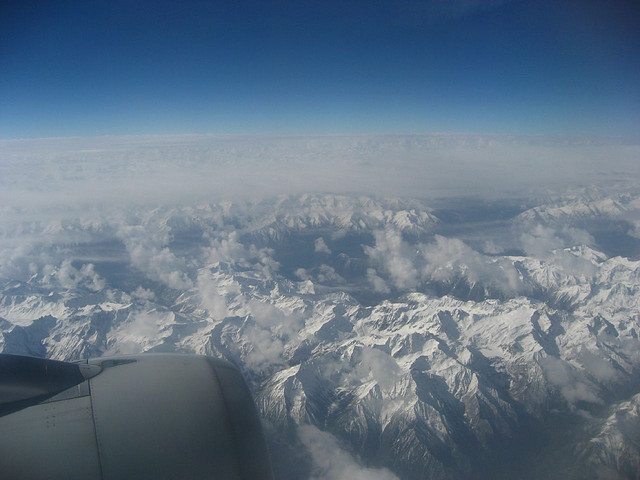
The Himalaya (photo: David Lee)
[T]he world's mountainous regions are all popular with adventurers, and no area represents greater challenges than the Himalayas.
However, it's not just the mountaineers amongst us who can enjoy the spectacular opportunities. With cheap flights to India, adventurers of all persuasions can enjoy the Greater Himalayan National Park.
In the most northern reaches of India in the Himachel Pradesh, the GHNP took 20 years to establish, finally becoming a National Park in 1999.
The park offers a huge range of eco tourism options to visitors to experience the amazing beauty of the area and support the local community.
The park is accessible by road and air. It is a 14-hour road trip from Delhi or by air from Delhi to Buntar which is 50km from the park.
Treks through the GHNP can be undertaken with guides but entry and route permits are subject to approval by Park officials for obvious safety reasons.
The shortest trek inside the park is a five day 56km trek across the Sainj river valley with an optional additional 10km for the round trip the Dhel taking in a mountainous trek through dense forest to a high, wide meadow, with great vistas and opportunities to spot wildlife.
The majority of treks are more strenuous and are seven or eight days. To see some mountainous drops, waterfalls and a chance of observing the Himalayan Tahr or Black Bear try the Sainj-Tirath Valley trek or the Tirthan Valley trek. Both are eight days and involve some strenuous climbing through dense forest.
For the superbly fit, the trip from Jiwa Nala to Parvati River Valley is very strenuous but truly dramatic with a total up down of 3500m in one day, as part of the seven-day journey. It involves high peaks with snow, and opportunities to see Brown Bear and Snow Leopard.
Outside of the park is the Ecozone, and trails here provide a view of the local communities and their crafts and livelihood. A great time to visit is the autumn when the Dushera Festival, a major Hindu event is on. Displays of music, costumes, exhibitions and foods fill the roads and towns.
There are two tourist centres at GHNP. The Larji information centre is well located for orientation from Neuli or Gushaini.. Park brochures, posters, and entry ticket to the Park can be obtained and the headquarters of Jiwanal Range Officer is also located here.
Sia Ropa Tourist Centre is 5km from Banjar and 5kms before the Gushaini entrance to the park and acts as the HQ for the Tirthan Wildlife Range Office and tickets to the park can be obtained here.
The Centre has a Forest Rest House with two dormitories (20 beds in all), Outside, there is a 520m long Biodiversity Trail which has trees and medicinal plant species transplanted from the Park, a pergola with Tirthan river view, a demonstration site for vermicomposting, a butterfly enclosure and a solar energy site.
Whatever your adventure at GHNP you have a unique opportunity to see some of the rare and endangered ecosystems which make the work of the park so important. Treasure every second.
_______
About the Author: Linda is a freelance writer and bookseller who, following 19 years in IT for a large airline, loves to write about the places she has visited. She also adores her other job as a bookseller in a local bookstore.
This post was written by a guest contributor. Please reference the author's byline in the post above for more information. If you would like to guest post on Go Backpacking, please read our submission guidelines. For information on advertising opportunities, go here.
Planning a trip? Go Backpacking recommends:
- G Adventures for small group tours.
- Hostelworld for booking hostels.

elliot
Monday 4th of June 2012
Hiking the Himalayas is great experience, I just love it but i don't have the chance to take a trip. Fully one third of the Himalaya is contained within Nepal's borders, as are the summits of eight of the world's 14 highest mountains (those over 8000 meters). Fortunately, some of the most spectacular countryside in and around this monolithic range is open to determined trekkers.